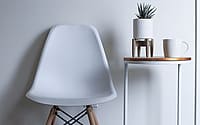5 Must-Dos Before Moving Your Furniture Alone
Moving furniture can be fun and exciting, especially when others come to help. Time flies so fast when everyone is chit-chatting while lugging things. You’re not only making things done fast together but also creating memories to remember.
But what if you’re alone? Just thinking that you have to load and unload things is probably making you want to back out. On a positive note, there are always smart ways we can follow to make moving a bit easier and safer.
Before moving, here are some must-dos you have to take note of for easier, safer furniture moving.
Plan Ahead
Whether moving to a new house or rearranging your place, plan where your furniture lands beforehand. Sketch your floor plan, get the correct measurements of each room and furniture, and then decide your layout.
When you don’t have an exact plan in mind, the chances are you’ll keep moving things here and there. However, moving is a very labor-intensive process. If you’re not careful, you’ll end up injuring yourself. That’s why planning ahead isn’t only time-saving but also way safer.
Box Small Items in Big Boxes
Boxing every single item and moving them one by one is very time-consuming. It can be costly, too, since you’re using many boxes. Instead, put small furniture items in medium to large boxes, which helps you move things easily and quickly.
Also, look for low-cost, high-quality packing boxes to ensure cheap yet safe moving. It’s not hard to find them. There’s always an affordable storage provider in every area. For example, if you’re in Australia, Ezi Storage Osborne Park can give you storage assistance.
Take Apart What You Can
Take off any removable knobs, racks, legs, drawers, and shelves of your sofa, chairs, cabinets, and other things with removable parts. Doing so makes any piece of furniture sleeker or lighter, making them easy to lug through doorways or stairs. Remember to make an inventory of the furniture parts you removed, so you won’t miss anything.
Take apart the back of your recliners, too, if they’re removable. Find the back brackets inside or outside of the back frame. Then, raise the locking levers on each side with pliers and slide the back straight up. Make sure to tie the footrest, so it doesn’t spring open. Lastly, when lugging the recliner, do it from the sides, not by the footrest or the back.
Rely on Moving Tools
You shouldn’t only rely on your brute force, especially when moving heavy furniture. Overexerting yourself can hurt your arms, back, and legs. Instead, rely on tools that can give a helping hand. They don’t only keep you safe but also protect your furniture. Here are some of the things you should have:
Transport Dollies
Whether a two-wheeled hand truck or a four-wheeled square platform, transport dollies can move your furniture more smoothly and safely. Its platform can help you stack pieces of furniture in one convenient place, while its wheels make moving things around more secure and faster than if they are being carried by hand.
Shoulder Dollies
You can also use those strap-type ones, also called shoulder dollies, moving or lifting straps. It helps you leverage your strength, distribute the weight across your body, and leave your hands free. It prevents you from straining your back and legs. However, if you carry big furniture, it’s better to use it with someone else.
Ramps
Ramps will surely give you a hand if you’re lugging furniture from one floor to another. Renting a ramp is fine since you’ll use it temporarily, but it can bring added costs. If you’re on a tight budget, a piece of plywood can do the work. But it should be sturdy enough to accommodate the weight of the heaviest piece of furniture you’ll move.
Sliders
You need sliders when moving furniture across tile or hardwood floors. Placing them on the bottom of your furniture protects floors from dings and scrapes and makes moving furniture much faster. You can also opt for carpet sliders if your floor is carpeted. But if you’re cash-strapped, plastic container covers, bedspreads, moving blankets, towels, and carpet remnants help.
Gloves
Wear gloves to protect your hands from any sharp or jagged edges of your furniture. Not only that, but gloves protect your things too. They prevent you from transferring dirt or oils to your belongings.
Look Up Moving Techniques
Always lift things with your legs. Avoid twisting your body, and make sure to bend your knees. Also, keep what you’re lifting close to your body to maintain balance and ensure you can see clearly in front of you. On top of it, see to it that your path has no obstacles to avoid tripping.
If you’re new to moving, it’s deemed necessary to learn things first before actually moving your stuff. Again, moving furniture requires a lot of physical exertion. In other words, one wrong move can injure you.
Final Thoughts
Don’t hesitate to ask for help if you think you’ll struggle to move things by yourself. After all, moving things, especially heavy ones, can put you in danger. Also, moving isn’t supposed to be a competition. There are no awards for muscling through it all on your own.
- by Matt Watts








